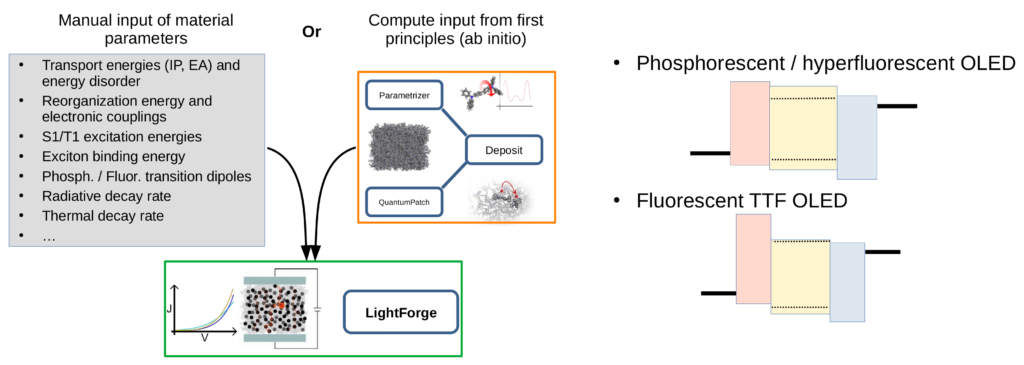Microscopic simulations of charge carrier and exciton dynamics, in which charges and excitons are modeled as single entities, can serve as virtual microscope: Detailed analysis of excitonic processes for a specific setup can aid to identify and understand microscopic bottlenecks and help to develop design rules for optimized OLEDs. Here we illustrate how to set up a three-layer model phOLED and a TTF OLED in LightForge and how to analyze exciton dynamics in both systems. The single-module workflows are available with pre-defined settings in the trial version of our virtual lab available here.

While material-specific input for rates of excitonic and charge-transfer processes can in principle be derived from first principles (see e.g. the mobility use case), we set respective material parameters manually in this use-case. These type of LightForge KMC runs are part of the inverse design approach, where the sweet spot in the parameter space is identified as a first step, followed by the identification of materials meeting required properties, e.g. using Deposit and QuantumPatch.